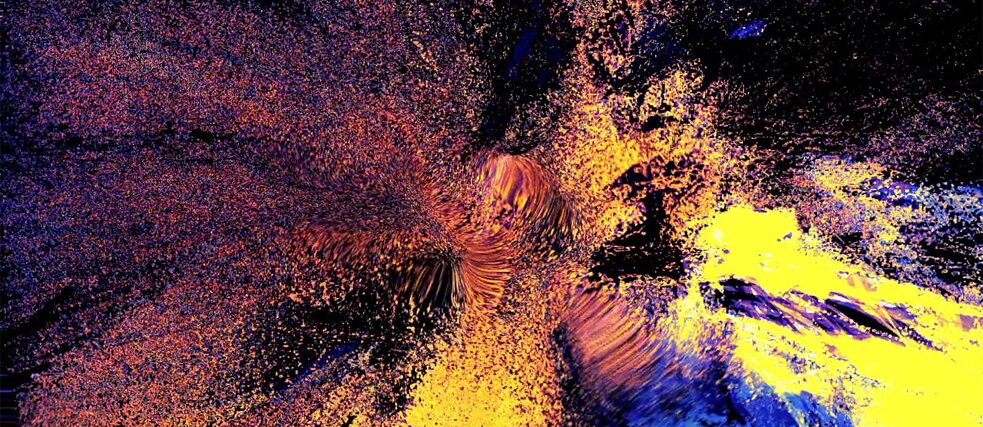Virtual Partner Residencies
Striking the Keys Virtually

“Forced Absence”
|
Illustration (Excerpt from video): © Tarik Barri and Ata Ebtekar alias Sote
The virtual partner residencies of the Goethe-Institut enable artistic collaboration in the digital space. They are aimed at professional solo artists and small ensembles in the field of music in Germany and abroad who are currently unable to physically work together due to the coronavirus pandemic.
By Leonhard Heydecker and Therese Hueber
The Latest at Goethe celebrates the 100th funded partner residency by asking a few artists about their experiences.
Deepening musical relationships
Mariana Zwarg, flutist, composer, saxophonist: I met Johannes in 2017; we’ve been creating music together ever since.Johannes von Ballestrem, jazz pianist: Instead of going on a big album release tour in 2020, we’ve sat at home with plenty of time on our hands.
Mariana Zwarg: The programme for virtual partner residencies is the perfect opportunity for us to develop our duet.
Johannes von Ballestrem: In three weeks we wrote songs and arranged them for our duet. The long daily video calls, mutual feedback and meetings were very productive. We finished four songs and already recorded two of them. We’re very grateful that we were able to do this thanks to the Goethe-Institut.
Mariana Zwarg: It helped us deepen our musical relationship. We look forward to performing the pieces we wrote together live.
The fusion of past and present
Silvia Rosani, composer: Together with the wonderful horn player Deepa Goonetilleke, I created a new work for horn and live electronics.Deepa Goonetilleke, French hornist: During several online meetings, I demonstrated to Silvia the different sounds of a modern horn and a natural horn, as well as some advanced techniques. I’ve wanted to work with Silvia for a long time because of her knowledge of electronic music and her wonderful work as a composer.
Silvia Rosani: The history of the instrument moved me to write a piece for the natural horn and to use the variability of the vocal and valve tubes as choreography for the piece. The use of live electronics unites the past and the present.
Not being able to play music or record pieces together in one room also presents some artists with new challenges. Before starting their collaboration, many participants have to deal with technical issues such as latency, suitable software and recording technology.
During the artists’ working phases, new pieces, songs, virtual sound installations and music films were created. The residents report on new, important artistic experiences and express the wish to be able to further develop the projects that have been created in the exclusively digital exchange and present them to an audience.
Forced separation
Ata Ebtekar alias Sote, composer of electronic music, sound artist: The piece is an audio-visual composition about the forced separation from one’s family, loved ones and country. It started with an Afghan woman, an immigrant in Iran, who asked me and my family for help. She was at a point where her husband’s mistreatment necessitated separation from her children and she fled back to Afghanistan alone.Tarik Barri, audio and video artist: Pain, sadness and beauty blend into one another, just as the sound and the images blend into one another. We speak different languages, come from different places, create different types of art. But we understand well what others are trying to tell us when they create works.